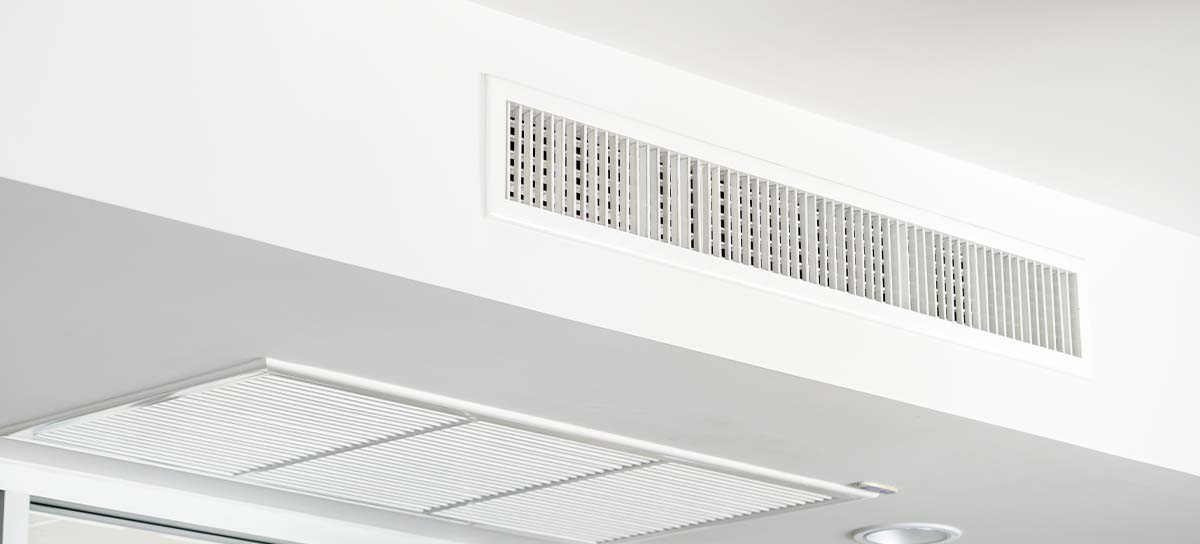
HVAC (Heating, Ventilation, and Air Conditioning) systems help maintain indoor comfort, whether it's in our homes, offices, or other indoor spaces.
There are many factors that contribute to achieving balanced indoor air comfort in HVAC systems. One of the most fundamental yet often overlooked aspects is airflow management.
In today’s blog post, we will share more information about what HVAC airflow is, why it is important, the benefits of having balanced comfort, and how to manage common issues with HVAC airflow. Our goal is to help understand and actively manage airflow as it is essential to maintaining a comfortable, healthy, and energy-efficient indoor environment.
We understand how this can seem daunting and overwhelming at best. We are here to support you through this process. Our highly skilled team is one phone call or email away, so don’t be afraid to reach out for any of your HVAC needs.
What is HVAC Airflow?
HVAC systems are integrated systems that control the temperature, humidity, and air quality within indoor spaces. They encompass heating, cooling, and ventilation components to maintain a comfortable environment.
HVAC systems are found in residential, commercial, and industrial buildings.
Airflow is the movement of air within an HVAC system, from the intake of outdoor air to the distribution of conditioned air to various rooms. It transfers heat or cooling capacity to indoor spaces. Airflow is moved through a network of ducts, filters, fans, and vents to ensure proper distribution and ventilation.
Why is HVAC Airflow Important?
When we think about HVAC systems, we usually think about their ability to heat or cool our spaces effectively. However, not even the most advanced HVAC units can perform optimally without proper airflow.
Airflow management ensures that air circulates efficiently throughout the system, from the intake of fresh air to the distribution of conditioned air into different rooms.
Without proper airflow management, several issues can arise. Air might not be distributed evenly, causing temperature imbalances within a building. Certain areas may feel too hot while others remain too cold. Inadequate airflow can also strain the HVAC system, causing it to work harder and consume more energy, which in turn increases energy bills and carbon emissions.
Poor airflow management can also result in reduced indoor air quality. Stale air, allergens, and pollutants may linger, leading to discomfort, health issues, and allergies.
Benefits of Balanced Comfort in HVAC Systems
Balanced comfort in HVAC systems means achieving a consistent indoor environment throughout a building. This encompasses factors like uniform airflow, appropriate humidity levels, and good air quality.

When HVAC systems are designed and maintained to provide balanced comfort, there are several key benefits:
- Consistent Temperature: Rooms maintain a consistent temperature, eliminating hot and cold spots.
- Energy Efficiency: Proper airflow management reduces the workload on the HVAC system, making it operate more efficiently. This, in turn, lowers energy consumption and reduces utility costs.
- Improved Air Quality: Balanced comfort includes effective ventilation and air filtration, leading to cleaner, fresher indoor air. This is especially important for those with allergies or respiratory conditions.
- Extended Equipment Lifespan: An HVAC system that doesn't have to work excessively hard due to airflow issues is likely to have a longer lifespan, saving on replacement and repair costs.
- Enhanced Productivity: In commercial spaces, balanced comfort can increase productivity among employees who are comfortable and not distracted by temperature variations.
Common Issues with HVAC Airflow
Like with any piece of equipment, problems are inevitable. Here are some common problems related to HVAC airflow for you to keep an eye out for:
- Obstructed Airflow: Blockages or debris in the ductwork can restrict the flow of air, reducing system efficiency.
- Imbalanced Air Distribution: Some rooms may receive more airflow than others, leading to uneven temperature distribution.
- Dirty or Clogged Filters: Neglecting filter maintenance can result in clogged filters, reducing airflow and diminishing indoor air quality.
- Leaky Ducts: Ducts with leaks or gaps can cause conditioned air to escape, wasting energy and reducing efficiency.
- Inadequate Ventilation: A lack of proper ventilation can result in stagnant air and poor indoor air quality.
- Improper Sizing: Undersized or oversized HVAC systems may struggle to provide adequate airflow and comfort.
- Fan Issues: Malfunctioning or dirty fans can hinder airflow, causing inefficiency and discomfort.
These issues can greatly impact indoor air quality. Here’s how:
- Temperature Variations: Obstructed airflow or imbalanced distribution can lead to rooms that are too hot or cold, causing discomfort for occupants.
- Stale Air: Inadequate ventilation and dirty filters can result in poor indoor air quality, leading to health issues and discomfort.
- High Energy Bills: HVAC systems with airflow problems often consume more energy to achieve desired temperatures, leading to higher utility bills.
- Shortened Equipment Lifespan: Strain on the HVAC system due to airflow issues can lead to premature wear and tear, requiring costly repairs or replacements.
- Reduced Productivity: In commercial settings, uncomfortable indoor conditions can lower productivity and morale among employees.
- Allergies and Respiratory Problems: Poor indoor air quality caused by inadequate airflow and dirty filters can exacerbate allergies and respiratory issues.
- Noisy Operation: Malfunctioning fans or imbalanced airflow can result in excessive noise, further contributing to discomfort.
HVAC Airflow Management Techniques
Diagnosing airflow problems in an HVAC system typically involves a visual inspection of ductwork, registers, and vents to check for obstructions or visible damage.

Here’s how you can do so:
- Visual Inspection: Start by visually inspecting your HVAC system, looking for obvious issues like obstructions, disconnected ducts, or visible damage.
- Airflow Testing: Use an anemometer or airflow measuring devices to check airflow at various vents and registers throughout your home or building.
- Ductwork Inspection: Examine the ductwork for leaks, gaps, or signs of damage, and inspect the insulation to ensure its intact.
- Filter Assessment: Check and replace air filters regularly to ensure they are clean and not obstructing airflow.
- Professional Assessment: Consider hiring an HVAC technician for a comprehensive inspection and assessment of your system.
Methods for Optimizing Airflow in HVAC Systems
Proper Ductwork Design
- Ensure that your ductwork is appropriately sized and designed to accommodate the airflow requirements of your HVAC system.
- Seal all duct joints and connections to prevent air leaks.
- Insulate ducts in unconditioned spaces to prevent heat gain or loss.
Use of Zoning Systems
- Implement zoning systems that divide your space into different zones with independent temperature control.
- Zoning allows you to direct conditioned air where it's needed, improving comfort and energy efficiency.
- Smart thermostats and dampers can help automate zoning based on occupancy and temperature preferences.
We wrote an entire blog post on the topic of HVAC zoning, so check it out here if you’d like to learn more, "HVAC Zoning for Personalized Comfort."
Airflow Sensors and Controls
- Install airflow sensors and controls that can monitor and adjust airflow in real time.
- Variable-speed fans and dampers can modulate airflow to match heating and cooling demands, increasing energy efficiency.
- Programmable thermostats can optimize airflow based on occupancy schedules.
Regular Maintenance and Cleaning
- Schedule routine maintenance for your HVAC system, including cleaning and servicing.
- Clean or replace air filters as recommended by the manufacturer.
- Ensure that vents, registers, and grilles are unobstructed and free from dust and debris.
Professional HVAC Services
When in doubt, always call an expert.
Professional HVAC services are essential for effective airflow management in HVAC systems due to their expertise in diagnosing, addressing, and optimizing airflow issues. As HVAC professionals, we handle various critical tasks, including ductwork inspection, system design, sensor installation, and component fine-tuning. They are especially essential when persistent airflow problems, major installations, or complex adjustments are required to enhance energy efficiency and indoor comfort. We can assess and execute strategies to resolve existing issues and prevent future complications, ensuring efficient system operation and desired comfort levels.
We understand how this can seem daunting and overwhelming at best. We are here to support you through this process. Our highly skilled team is one phone call or email away, so don’t be afraid to reach out for any of your HVAC needs.



